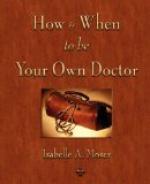There are severe inconsistencies with the entire “cholesterol-is-evil” theory. Ethnic groups like the Danes, who eat enormous quantities of cholesterol-containing foods, have little circulatory disease. Actually, the liver itself produces cholesterol; it’s presence in the blood is an important part of the body chemistry. Cholesterol only becomes a problem because of deranged body chemistry due to the kind of overall malnutrition Americans usually experience on their junk food diets. Avoiding cholesterol in foods does little good, but eating a low-fat, low-sugar, complex-carbohydrate (whole foods) diet high in minerals does lower blood cholesterol enormously.
Actually, high quality fresh (not rancid) butter in moderate quantities is about the finest fat a person could eat. But high quality butter is almost unobtainable. First of all, it has to be raw, made from unpasteurized cream. Second, butter can contain very high levels of fat-soluble vitamins, but doesn’t have to. Vitamin-rich butter’s color is naturally bright yellow, almost orange. This color does not come from a test tube. Pale yellow butter as is found in the commercial trade was probably almost white before it was artificially tinted. Butter from grass-pastured cows naturally changes from yellow-orange to white and back again through the year as the seasons change. Spring grass, growing in the most intense sunlight of the year contains very high levels of chlorophyll and vitamins. Cows eating this grass put high levels of vitamins A and D into their cream, evidenced by the orange color of vitamin A. By July, natural butter has degraded to medium-yellow in color. By August, it is pale yellow. Industrial dairy cows fed exclusively on hay or artificial, processed feeds (lacking in these vitamins), produce butterfat that is almost white.
I prefer to obtain my butter from a neighbor who has several dairy cows grazing on fertile bottom land pasture. We always freeze a year’s supply in late spring when butter is at its best. Interestingly, that is also the time of year when my neighbor gets the most production from her cows and is most willing to part with 25 pounds of extra butter.
In general, fats are poor foods that should be avoided. Their ratio of nutrition to calories is absolutely the worst of all food types, except perhaps for pure white sugar, which is all calories and absolutely no nutrition (this is also true for other forms of sugar. Honey, too, contains almost no nutrition.). Gram for gram, fats contain many more calories than do sugars or starches. Yet gram for gram, fats contain virtually no nutrition except for small quantities of essential fatty acids.
The perverse reason people like to eat fats is that they are very hard to digest and greatly slow the digestive action of the stomach. Another way of saying that is that they have a very high satiety value. Fats make a person feel full for a long time because their presence in the stomach makes it churn and churn and churn. Fats coat proteins and starches and delay their digestion, often causing them to begin fermenting (starches) or putrefying (proteins) in the digestive tract.




